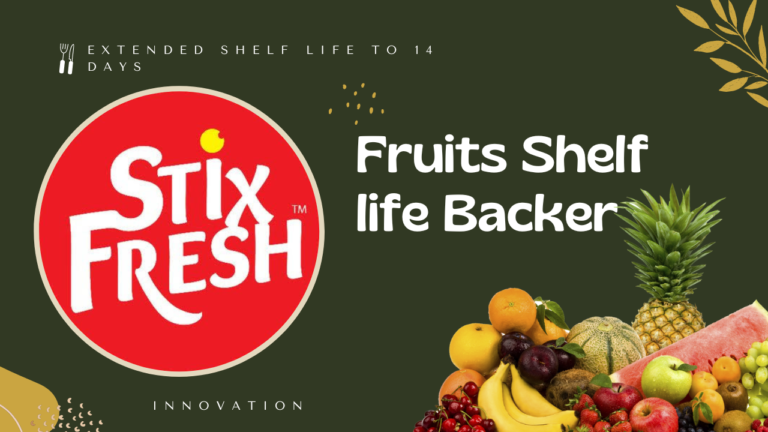Health & Nutrition
Prebiotics are considered one of the most prominent life promoters as they provide potential health benefits. Prebiotics are non-digestible food ingredients that target specific bacteria within the colon and selectively enhance/limit their growth. The ultimate purpose of considering prebiotics supplements in the human diet is for the management of gut microbiota. Inulin is a type of fiber that functions as a prebiotic and transforms bacteria into productive metabolites such as short chain fatty acids. It is a polymer of fructose monosaccharides. Inulin occurs in many plant-based food such as garlic, chicory root, onions and Jerusalem artichoke. Inulin elapses through the digestive system and feeds gut bacteria. It increases the community of good bacteria in the microbiome of gut. Inulin is a insoluble fiber that softens the stool and aid constipation. Inulin is also known to help weight management, reduce the risk of diabetes, reduce hunger and improve motility. [1][2][3]
Sources and Extraction
Natural sources: Inulin is a polysaccharide that occurs naturally in many plants. There are about more than 35000 plants species that contain inulin. As per research, chicory roots (35.7–47.6 g/100g) are the richest source of inulin, followed by Jerusalem artichoke (16-20g /100g) and garlic (9g-16g/100g). Other natural sources of inulin that contain appreciable amounts of inulin are raw wheat, asparagus, onion, barley, rye, leek and banana.
Manufactured sources: Commercially inulin from natural sources are modified and sold in the form of supplements – capsules and powders or, ingredients in foods like- yogurt, protein bars, beverages, bakery products and desserts.
Process of extraction
Materials required- Chicory roots.
The process occurs in 3 major steps:
1.Extraction – Cleaning of roots by washing with water and removing sand, stones and dirt. The roots are then reduced to a desirable size by slicing or pulping. The roots/granules are diffused by heating to 80-90 °C for 90 min. As a result, chicory juice is produced.
2.Purification – Chicory juice is purified to make it edible. The Purification process involves – pre-liming, liming, carbonation, filtration (usually by ultrafiltration), demineralization, decolorization (removes bitter components).
3.Drying – The granules are evaporated to remove the water. After the removal of water the product is dried completely by spray drying method. The final product Inulin powder (96% dry matter) is obtained. [2][4][5]
Health Benefits
Gut health- Inulin selectively stimulates the growth of good bacteria in the intestine and inhibits the growth of pathogenic bacteria. After Insulin supplementation researchers observed a noticeable increase in health promoting bacteria such as Bifidobacterium, Anaerostipes, Faecalibacterium and Lactobacillus. While decreasing the growth of bad bacteria (Bacteriods). It maintains healthy microbiome in the gut, cure constipation or any bowel syndrome. Diabetes- Studies involving people with type -II diabetes showed that inulin supplementation reduced fasting blood sugar levels, HbA1c levels and fasting insulin. It improved good cholesterol in the body
Weight Loss- Inulin are fiber that keep the stomach full for a longer period and slows down the rate of food digestion in the stomach. This in turn supports weight loss by reducing the desire for unnecessary carvings for food or controls the appetite.
Quality Sleep- Gut microbiome is connected to our nervous system. Some researchers believe that healthy gut microbiome indirectly stimulates the brain and helps get quality sleep. Calcium and magnesium absorption- Inulin fiber enhances the absorption of calcium and magnesium minerals in the gut that are necessary for muscle functions, healthy bones, maintaining blood pressure and blood sugar levels.[4][5]
Application in Food
- Lower molecular weight inulin are used as sugar replacers because they are easily soluble and have good sweetness in foods. It is used for texture modification in foods, It is added as a prebiotic component in many food like nutrition bars, milk products, desserts and baked goods etc. In intense sweeteners, it is added as a bulking agent.
- High molecular weight inulin has no taste and it’s solubility rate is very slow. It is used as a fat replacer in many foods. It is also added in food products as a source of dietary fiber and prebiotic effects.
- Inulin is used in the manufacturing of pharmaceutical and nutraceutical products.[2][5]
Side Effects of Inulin
- High intake of inulin can cause infection in the alimentary tract.
- Inulin is a type of fiber that is gaseous, releases gas in the stomach and causes abdomen discomfort, bloating and diarrhea
- Consumption of inulin more than 14 g per day increases lipid content and causes hypolipedemia [2][5]
Conclusion:
Inulin is a natural polysaccharide that occurs in plants. The process of extracting I lunch is less expensive and easier. The significant purpose of adding inulin to food products is for its prebiotic action. The important prebiotic function is stimulating the growth of good bacteria and maintaining a healthy microbiome by suppression of pathogens. It can contribute to the overall maintenance of the body and promote a healthy life. Inulin is considered safe and does not have any adverse health effects. However, high consumption can lead to gastrointestinal infections, 10-15 g of inulin daily is safe limit for humans in accordance with the research.[2][3][4][5]
References:
1. Kolida, S., Tuohy, K. and Gibson, G., 2022. Prebiotic effects of inulin and oligofructose. [online] googlescholar.com. Available at: <https://www.cambridge.org/core/journals/british-journal-of-nutrition/article/prebiotic-effects-of-inulin-and oligofructose/4C8D01FE5AF4A6A81965344B26FAB14D> [Accessed 24 July 2022].
2. Atlas Biomed blog | Take control of your health with no-nonsense news on lifestyle, gut microbes and genetics. 2022. What Is Inulin: Benefits, Side Effects And Inulin-Rich Foods. [online] Available at: <https://www.google.com/amp/s/atlasbiomed.com/blog/inulin-prebiotic-fiber/amp/> [Accessed 24 July 2022].
3. Franziska Spritzler, 2022. Inulin (a prebiotic fiber): Health benefits and risks. [online] Medicalnewstoday.com. Available at: <https://www.medicalnewstoday.com/articles/318593> [Accessed 24 July 2022].
4. Barbie Cervoni, MS, RD, CDCES, CDN, 2022. Inulin Benefits, Uses, and Side Effects. [online] Verywell Health. Available at: <https://www.verywellhealth.com/the-health-benefits-of-inulin-4587258> [Accessed 24 July 2022].
5. Teferra, T., 2021. Possible actions of inulin as prebiotic polysaccharide: A review. Food Frontiers, [online] 2(4), pp.407-416. Available at: <https://onlinelibrary.wiley.com/doi/full/10.1002/fft2.92> [Accessed 24 July 2022].



Inulin-Type Prebiotics For A Healthy Gut Microbiome